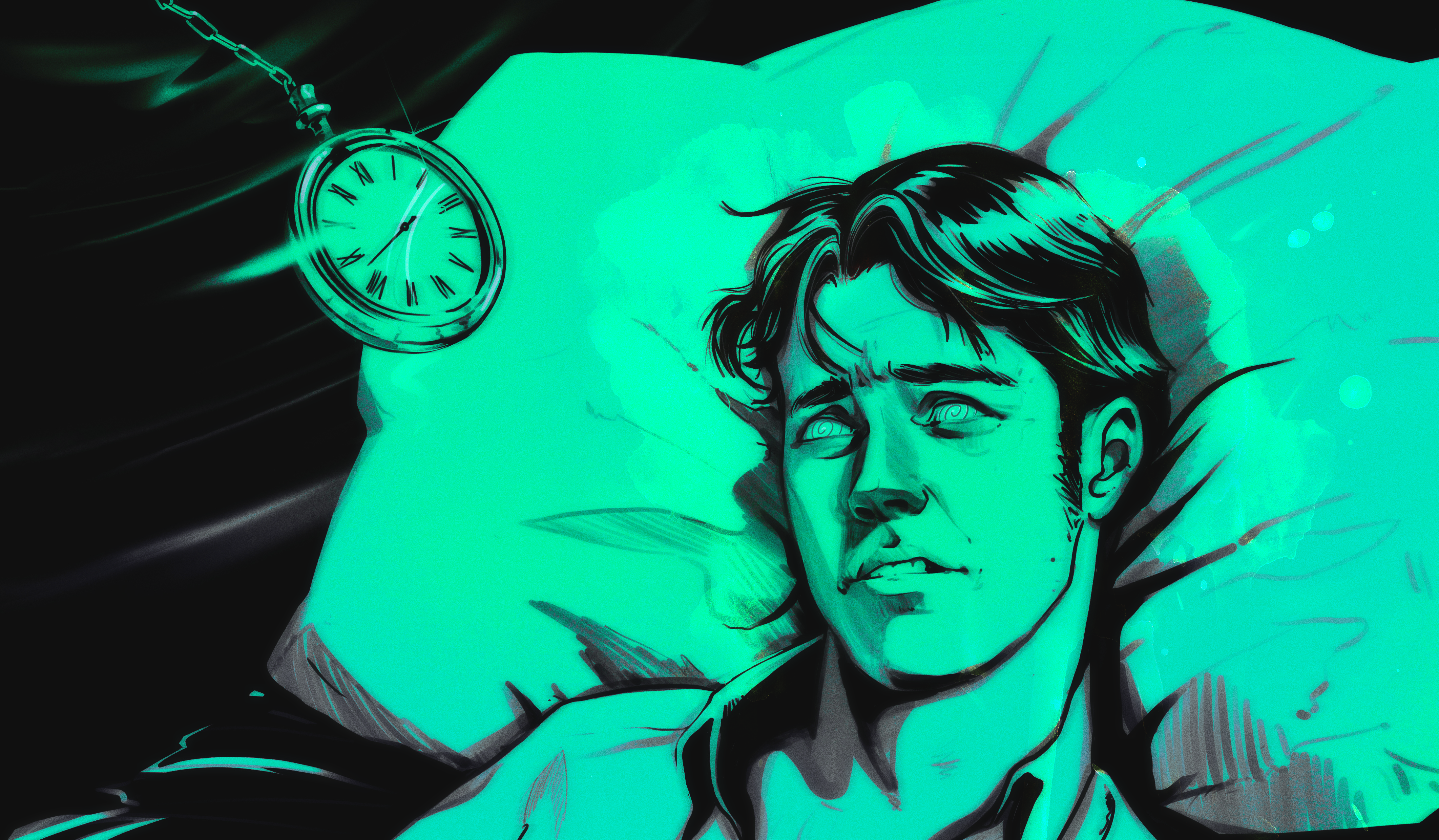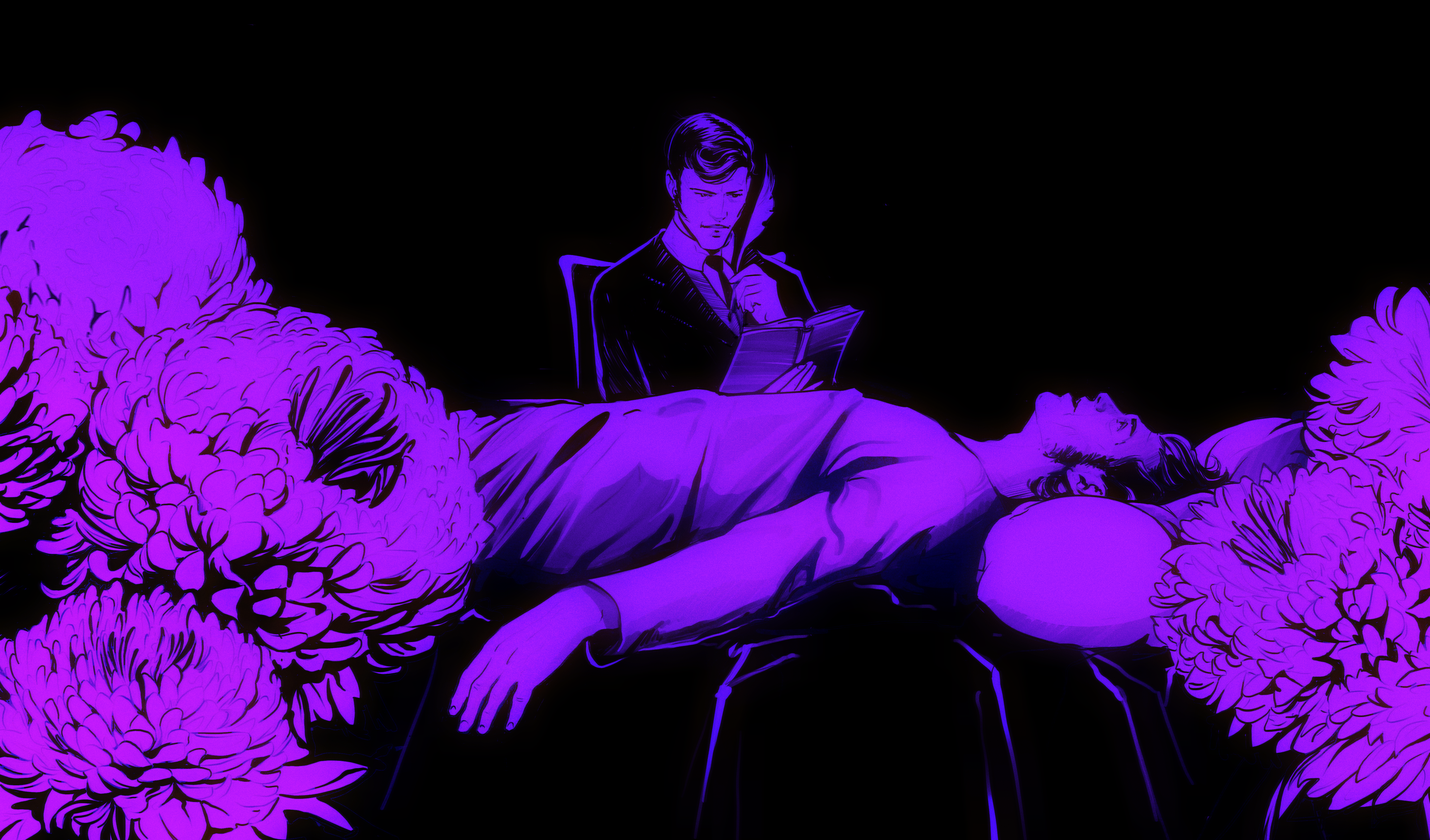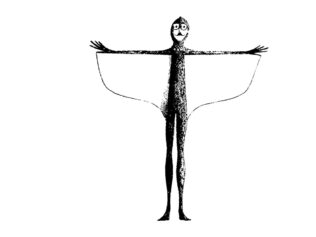
In the Valdemar Questionnaire, we give voice to translators who reflect on their work and role as intermediaries between languages and cultures. In this instalment of our series, Valdemar takes on Sean Gasper Bye, a translator of Polish and the author of the featured translation from the book Ellis Island: A People’s History by Małgorzata Szejnert.
You can read Sean’s translation of the excerpt from Małgorzata Szejnert’s “Ellis Island: A People’s History” here.
How did you come to translate Małgorzata Szejnert’s Ellis Island: A People’s History – a book about the mass immigration to America from Eastern Europe in the early 20th century?
I’ve worked on Szejnert’s books in small ways for a number of years – I love Polish literary journalism and think she’s one of the most beautiful writers in this genre. I thought it was remarkable she’d never had a book translated into English and thus began working with her publisher and agent. Ellis Island seemed a natural place to start for American readers, since Ellis is an iconic place for Americans.
It’s unclear whether any of my ancestors went through the Island, but my mother’s family had a fairly typical experience for immigrants to the US at the turn of the last century – my grandmother grew up speaking Polish in an immigrant family in upstate Pennsylvania, but she didn’t pass the language on to her children or grandchildren. What I found fascinating about Szejnert’s book was how it took the myth that I had internalized about the Island and showed me the much more complex, often darker, reality. And it did so not with an avalanche of facts and figures and analysis, but through the ordinary stories of the people who made the Island what it was.
What’s so special about this book written by a Polish author from the distance of Europe, over a hundred years after the events it describes?
When I first read this book in Polish, I loved it, but assumed the US market must already be packed with books about Ellis Island. To my surprise, I found there were relatively few, apart from academic histories and family memoirs – I wonder if we prefer the myth of Ellis Island to its real history. So Szejnert’s book is a contribution in the respect that it’s an excellently written popular history of the Island. But her particular warm, personal focus on the individuals who made the Island what it was, especially the staff, is unique and valuable. She focuses on particular people and returns to them in an interwoven narrative, in a way that’s beautiful and very insightful.
What was the most difficult thing about translating Ellis Island?
Simply put, it was that I had to follow in Szejnert’s footsteps in doing the research. She quotes from a huge amount of material – letters, diaries, memoirs – most of it originally in English. So I had to track down all of those sources, some of them unpublished, and locate the quotes. I was living in New York at the time, and the Ellis Island archive is divided between the New York Public Library (NYPL) and the Island itself. I spent many, many days in the genealogy division of the NYPL, and then two wonderful days at the Island library, looking through unpublished manuscripts. It was challenging, but a real joy.
What is the one thing you’ve learned from this book?
I expect many Americans who read this book will be surprised, as I was, to learn that the open-door immigration policy we learned about in school was a myth. Not only were immigrants from outside of Europe excluded almost entirely from the United States a century ago, but people with physical and mental disabilities, single women, the elderly, as well as people from Southern and Eastern Europe, were cruelly discriminated against. Family separations, long-term internments and deportation of minors without their parents all took place in this period. It’s a reminder that some of the practices we’ve seen aimed at immigrants in recent years have a longer history in our country.
What do you find most interesting about Małgorzata Szejnert’s writing?
Szejnert writes beautiful, fully-formed sentences – her style is very refined and elegant. It’s a contrast with the plainer, more telegraphic style often found among Polish reportage writers. On the one hand, it made her a joy to translate – the sentences fit together so naturally, the text flows on its own. But on the other hand, it was a challenge to keep my own style on the same level as hers. I hope I succeeded!
What part of your job do you like most?
I love the act of writing – I think it’s the reason I’m a translator, not an author. I love crafting words, but I’m not an organized enough thinker to come up with characters or storylines or the whole structure of a book. Translation lets me skip to the fun part.
What would you compare the act of translation to?
There are so many interesting metaphors for translation. Recently I’ve been thinking about translation and photography – both being disciplines that had to fight to be recognized as an art form. Photography in its early days was considered a ‘mere’ craft – it was considered documentary, rather than artistic. Since translation is also sometimes thought of as craft (a term that, for the record, I enthusiastically embrace), I have wondered what it would be like to think of translation as documentary – to imagine a translation having the same relationship to the original as a photograph does to its subject. I like this idea of artistic documentary, because I translate so much journalism (which, of course, has its own intimate relationship with photography). It’s a line of inquiry I haven’t played out entirely yet, but would like to think more about.
Is everything translatable?
Words are easy to translate (relatively speaking). But literature is part of culture – and culture comes from shared experience. Experience varies hugely across geographical distance – and across time (as the saying goes, the past is a foreign country). We cannot trust that a reader in a different place, a different time and a different language will have the same experience as a text’s first readers, just because I or one of my colleagues has put a text into English. But we can be sure that readers will make that text their own – creating, hopefully, a new shared experience and helping their culture to grow and develop.
What is the book you would like to translate most?
Paradisia, by the Polish science fiction master Janusz Zajdel. It’s a wonderful send-up of totalitarian society, published just after the end of Martial Law in Poland. It’s written like a puzzle and is full of intricate wordplay, with one of Zajdel’s trademark never-saw-it-coming twist endings. Zajdel is a world-class science fiction writer and it’s criminal that none of his books are available in English.
What is your favourite occupation (translation excluded)?
My great love other than translation is the theatre. I’m jealous of all the actors, directors, stage crew and others who get to live in that crazy, beautiful world every day – and I feel terrible for them as they wait for this pandemic to pass.
What is your idea of a translator’s perfect happiness?
Royalties from first sale.
What is the quality you most like in a translation?
Someone who can make the most of the full range of English – different registers, geographies, slang, neologisms… English can be so flexible and creative, I love seeing someone play with it.
What do you consider the most overrated virtue in translation?
Sophistication. In other countries, they translate all of our trashy commercial fiction. Why can’t we translate theirs?
Who is your favourite fictional hero?
I have to admit I was always on the villains’ side. The evil queens, wicked witches and dastardly ne’er-do-wells always seemed to have more fun.
Is there any author you are afraid of (translating) (Valdemar wants to know…)?
I wrote my undergraduate dissertation on Adam Mickiewicz’s Forefathers’ Eve, an incredible play that remains one of my favourites. It’s been translated several times, but I think we’re still awaiting the truly definitive English language version. It’s a ferociously difficult text… I hope someone else does it.
If you were to die and come back as a person (but not a translator) or a thing, what would it be? (Valdemar wants to know…)
I envy the trees, who must find us very funny with all our coming and going and never sticking around for terribly long. I think a few centuries as a redwood sounds delightful.
Sean Gasper Bye:
Sean Gasper Bye is a translator of Polish fiction, literary non-fiction and drama, including books by Lidia Ostałowska, Filip Springer and Szczepan Twardoch. He is based in Philadelphia.










